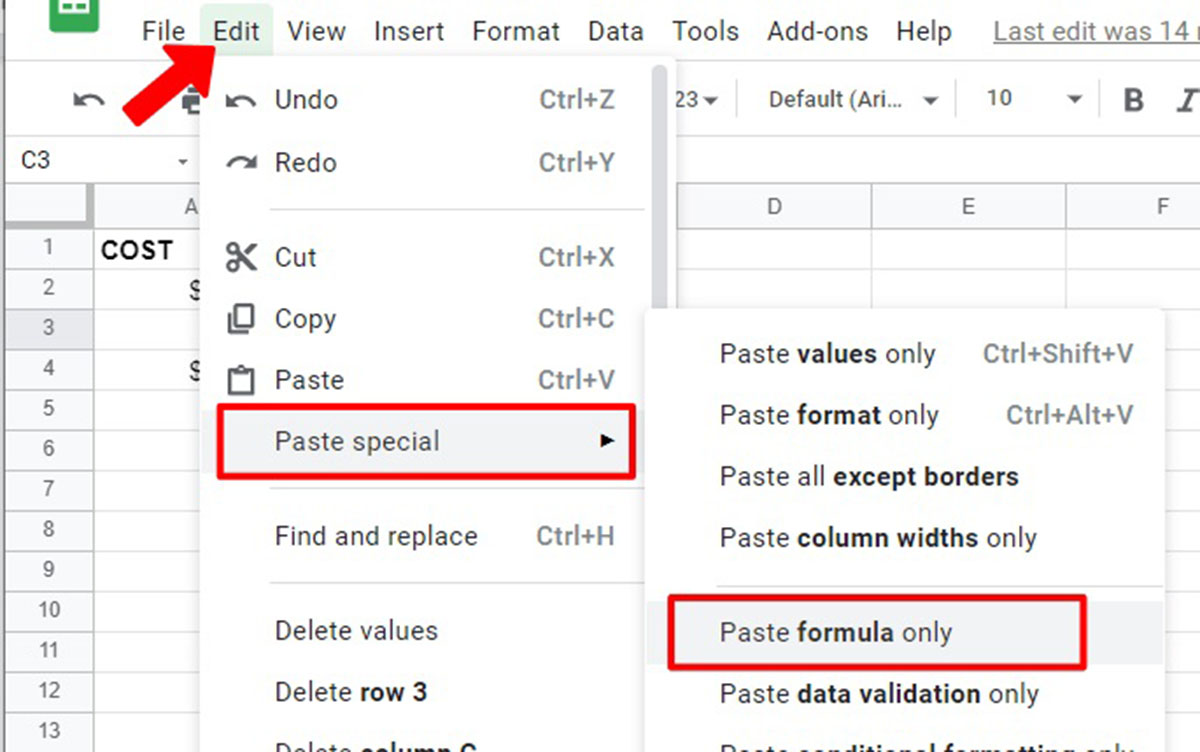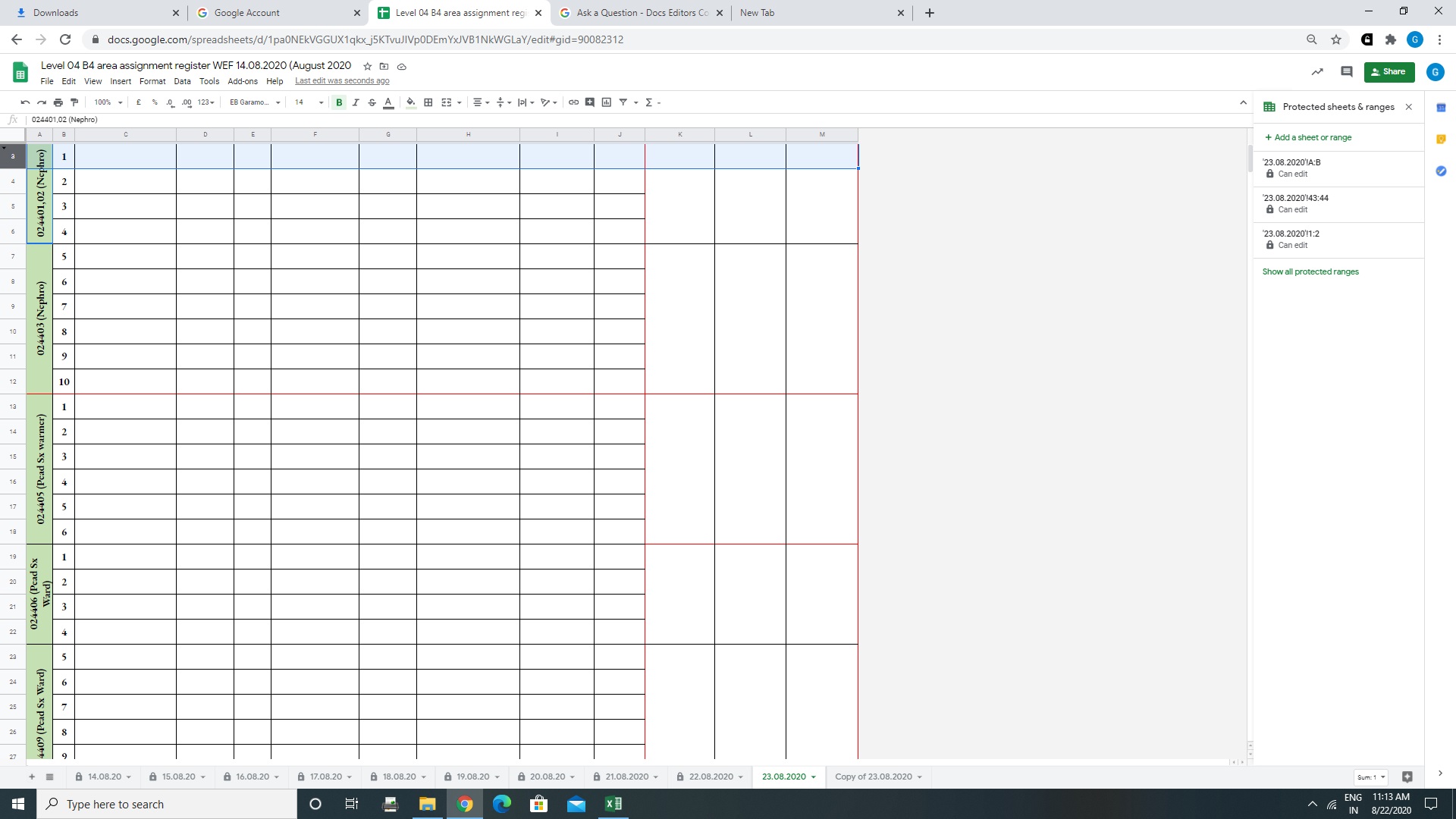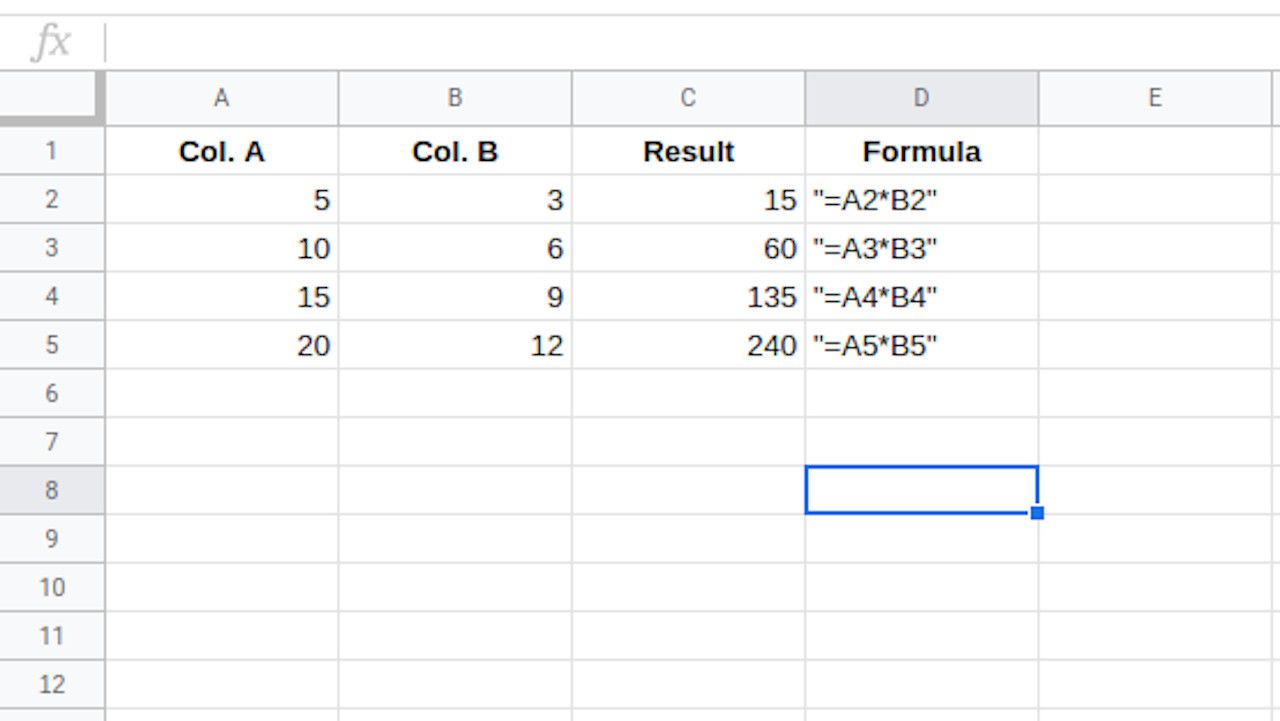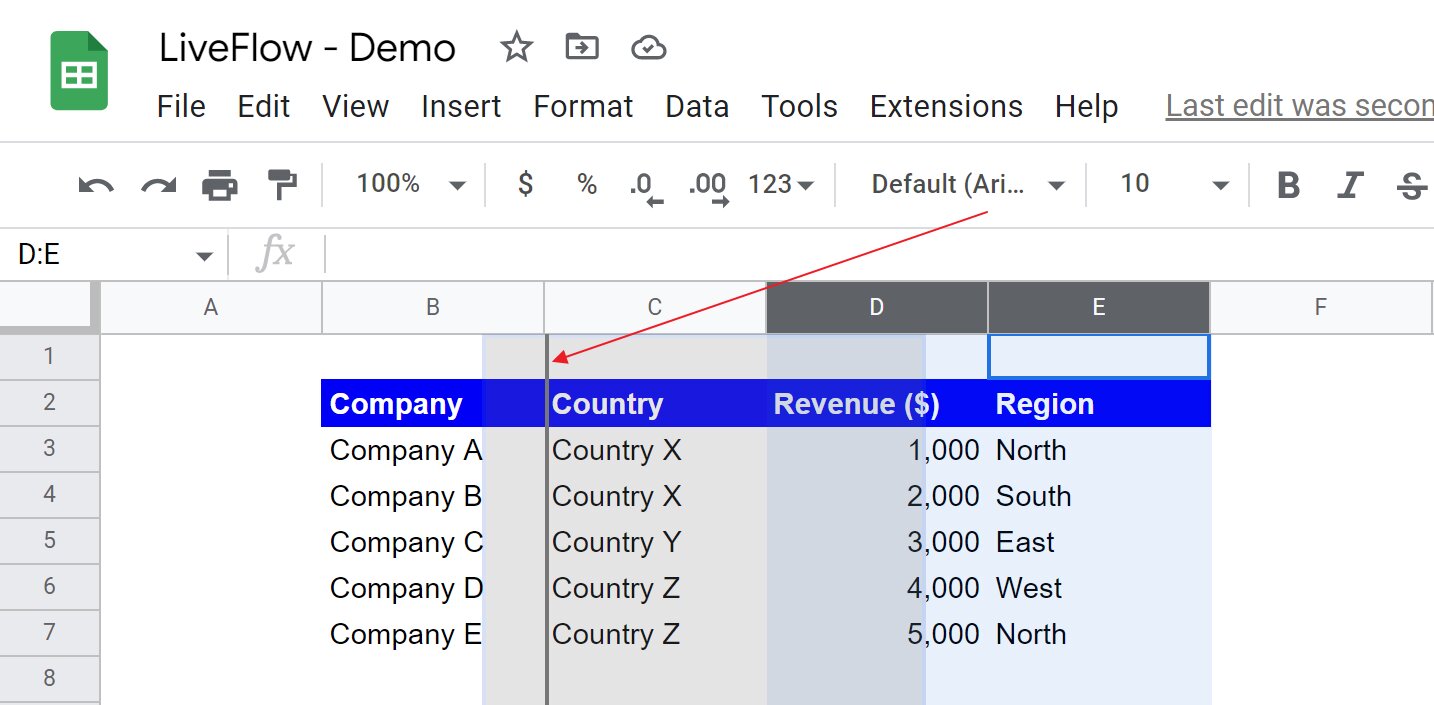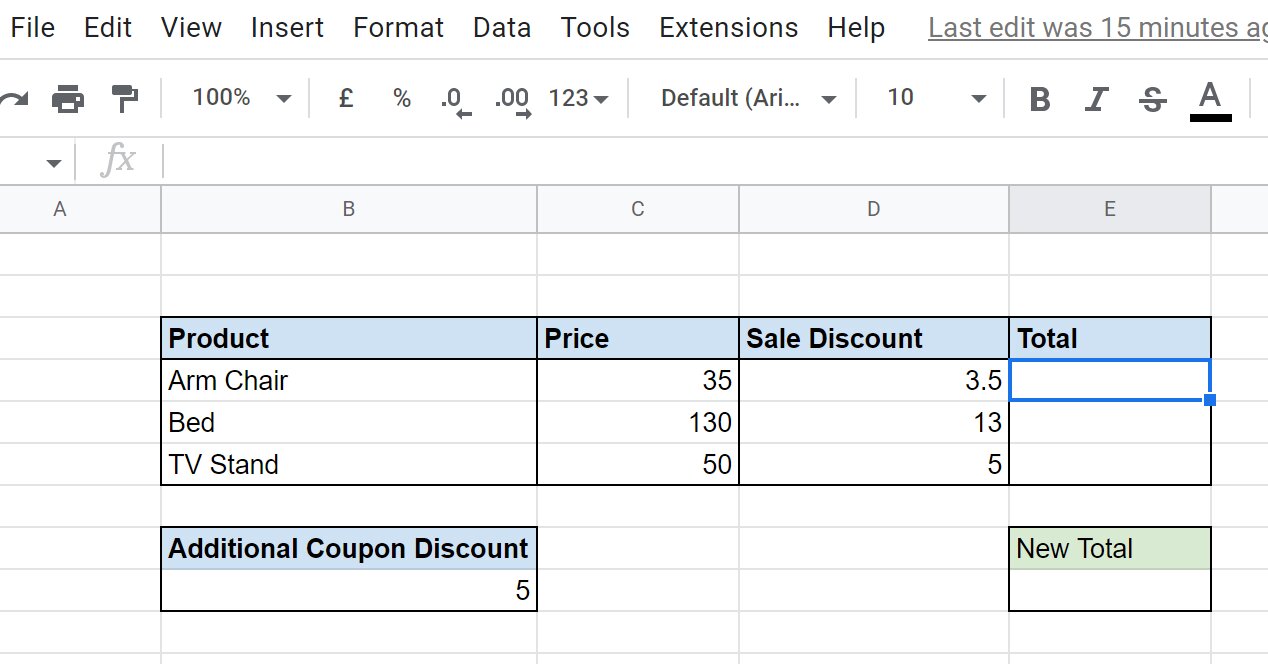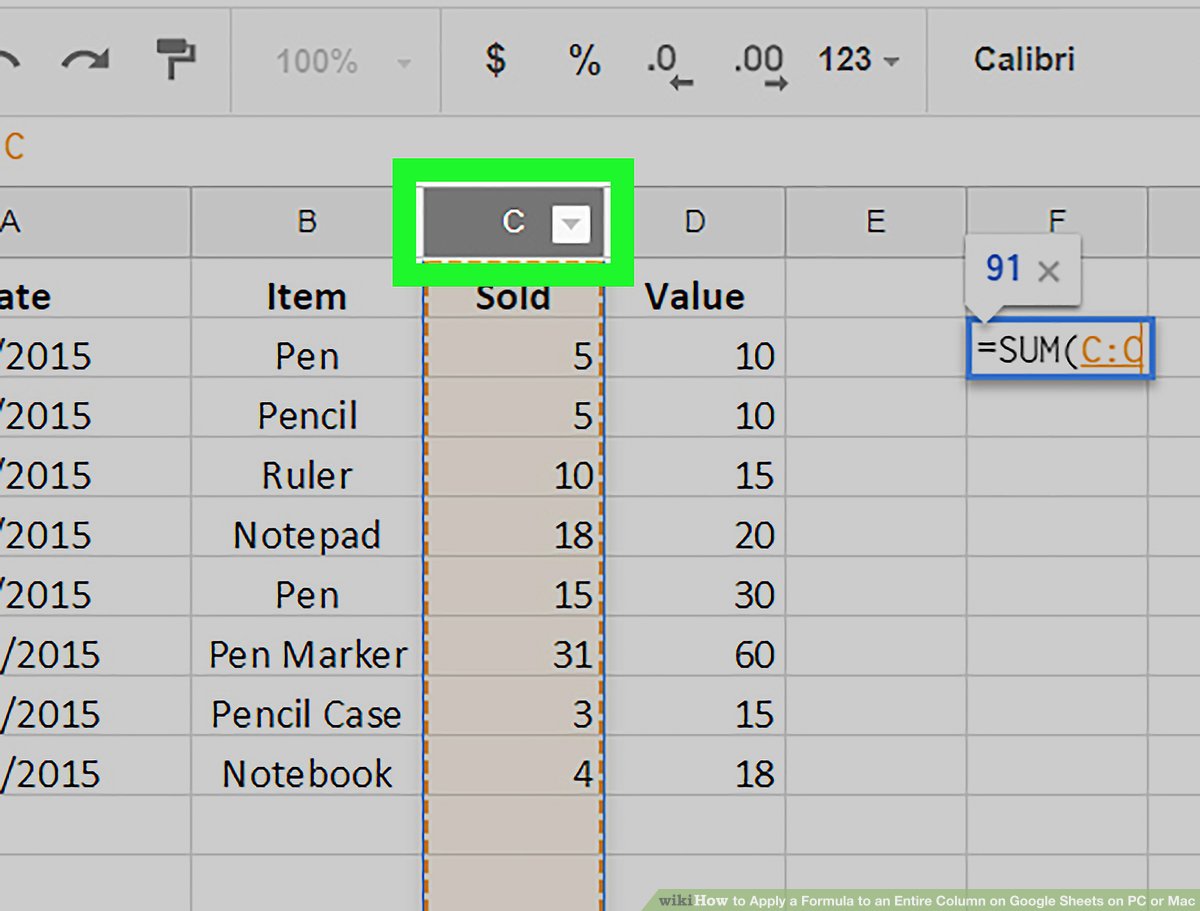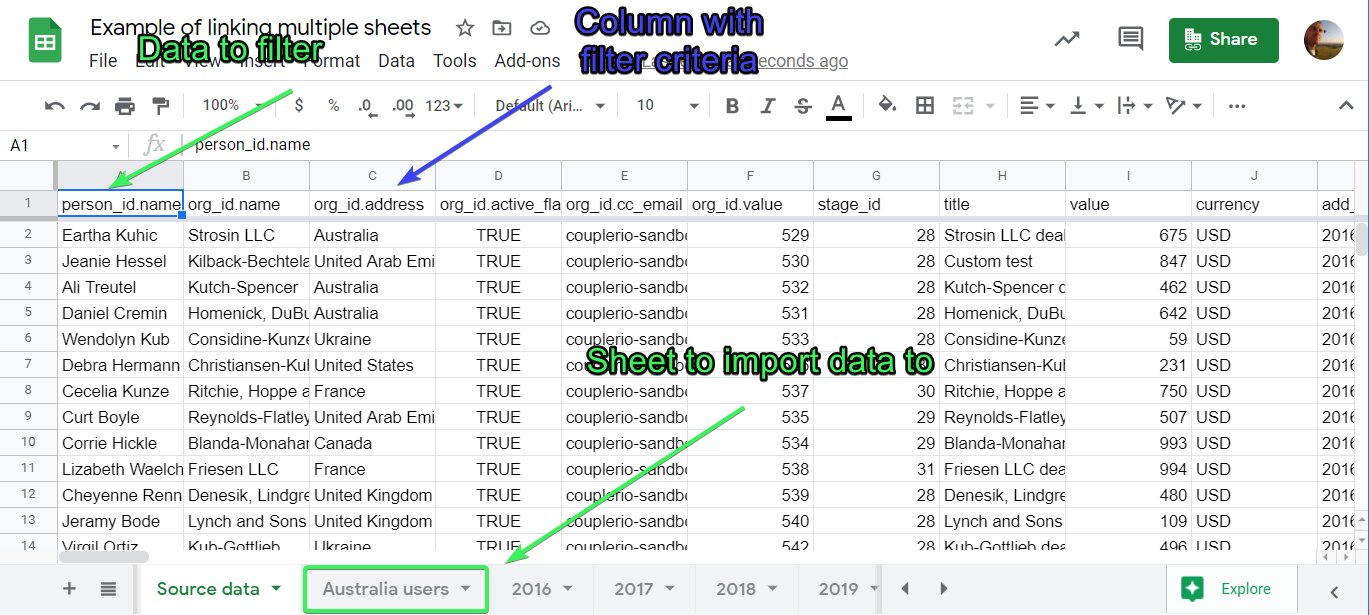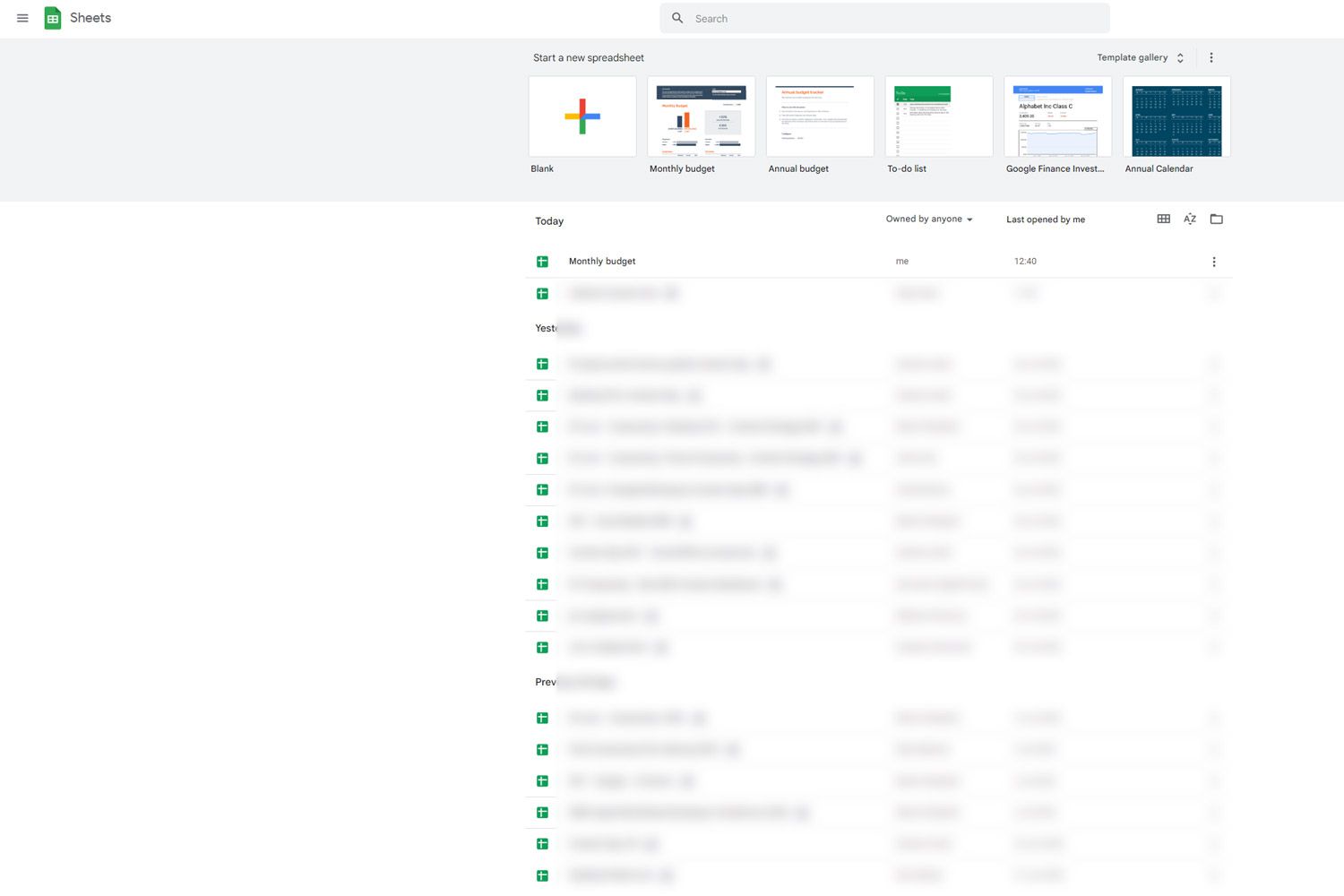Introduction
Google Sheets is a powerful cloud-based spreadsheet application that allows users to perform complex calculations and data analysis. One of the key features of Google Sheets is its ability to use formulas, which are mathematical expressions that perform calculations on cell values. These formulas can range from simple arithmetic operations to more advanced functions, making them a valuable tool for any data-driven task.
In this guide, we will explore the various methods to copy formulas in Google Sheets. Whether you need to duplicate formulas within a single sheet, across multiple cells, or even between different sheets, we’ve got you covered. Additionally, we’ll discuss the different types of cell references and how they affect formula copying. By the end of this guide, you’ll have a solid understanding of how to efficiently copy formulas in Google Sheets and save time on repetitive calculations.
Copying formulas can be a tremendous time-saver, especially when working with large datasets or performing complex calculations. It eliminates the need to manually input formulas repeatedly, ensuring accuracy and consistency across your spreadsheet. By mastering the art of formula copying, you can become proficient in harnessing the full potential of Google Sheets and streamline your workflow.
Whether you’re a beginner looking to learn the basics or an experienced user aiming to enhance your productivity, this guide will provide you with the knowledge and techniques necessary to effectively copy formulas in Google Sheets. So let’s dive right in and unlock the power of formula copying!
Understanding Formulas in Google Sheets
Before we delve into the different methods of copying formulas in Google Sheets, it’s essential to have a clear understanding of how formulas work within the application. Formulas in Google Sheets are built using a combination of mathematical operators, functions, and cell references. They allow you to perform calculations and manipulate data based on the values in various cells.
Google Sheets supports a wide range of functions, including basic arithmetic operations (such as addition, subtraction, multiplication, and division), as well as more advanced functions like average, sum, count, and many others. These functions can be combined within a formula to perform complex calculations.
One of the key features of formulas in Google Sheets is the use of cell references. Cell references allow you to refer to the value of a specific cell or range of cells within a formula. There are two types of cell references: relative and absolute.
A relative cell reference adjusts automatically when the formula is copied to other cells. For example, if you have a formula that adds the values of cells A1 and B1 and you copy the formula to cell C1, the formula will adjust to add the values of cells C1 and D1.
An absolute cell reference, on the other hand, remains constant regardless of where the formula is copied. It is denoted by placing a dollar sign ($) in front of the column letter and row number. For example, if you have a formula that multiplies the value of cell A1 by the value of cell B1 and you copy the formula to cell C1, the absolute cell reference will ensure that the formula still multiplies the value of cell A1 by B1, regardless of the destination cell.
By understanding the principles of formulas, operators, functions, and cell references, you can effectively utilize the various formula copying methods in Google Sheets. In the next sections, we will explore these methods in detail, allowing you to become proficient in copying formulas and maximizing your productivity.
Copying Formulas Using the Fill Handle
One of the simplest and most efficient ways to copy formulas in Google Sheets is by using the Fill Handle. The Fill Handle is a small square located in the bottom right corner of a selected cell. It allows you to quickly copy a formula to adjacent cells.
To use the Fill Handle, follow these steps:
- Select the cell containing the formula that you want to copy.
- Hover your cursor over the bottom right corner of the selected cell until it changes to a black plus icon (+).
- Click and hold the left mouse button, then drag the cursor down or across the range of cells where you want to copy the formula.
- Release the mouse button to complete the copy operation.
Google Sheets will automatically adjust the cell references in the formula as it copies to other cells. For example, if your formula references cell A1 and you copy it to cell B1, the formula will adjust to reference cell B1.
The Fill Handle also offers additional options when you drag it. For instance, you can choose to copy only the formula by dragging the Fill Handle while holding the Ctrl key. This can be useful when you want to copy the exact formula without adjusting any cell references.
Furthermore, you can use the Fill Handle to quickly fill a series of numbers, dates, or even custom text patterns. Simply enter the starting value, select the cell, and drag the Fill Handle to extend the series in the desired direction.
The Fill Handle is a powerful tool that simplifies the process of copying formulas in Google Sheets. It saves time and effort by automatically adjusting the cell references as you copy the formula to other cells. By mastering this method, you can efficiently duplicate formulas and perform calculations throughout your spreadsheet with ease.
Copying Formulas Using the Copy and Paste Method
An alternative method for copying formulas in Google Sheets is the Copy and Paste method. This method allows you to copy a formula from one cell and paste it into another cell, either within the same sheet or across different sheets.
Here’s how you can use the Copy and Paste method to copy formulas:
- Select the cell containing the formula that you want to copy.
- Right-click on the selected cell and choose “Copy” from the context menu, or press Ctrl+C on your keyboard.
- Move to the destination cell where you want to paste the formula.
- Right-click on the destination cell and choose “Paste” from the context menu, or press Ctrl+V on your keyboard.
Google Sheets will copy the formula from the source cell and paste it into the destination cell, adjusting the cell references accordingly. Similar to the Fill Handle method, the Copy and Paste method automatically adjusts the references in the formula to match the new location.
This method is particularly useful when you need to copy formulas to non-adjacent cells or when you want to paste the formula into a different sheet. You can simply switch to the desired sheet, select the destination cell, and use the Copy and Paste method to replicate the formula.
Furthermore, you can also use the Paste Special feature to control the specific aspects of the copied formula. This feature allows you to paste only the formula, paste the formula and the formatting, or paste values without any formulas. To access the Paste Special options, right-click on the destination cell, choose “Paste Special” from the context menu, and select the desired option.
The Copy and Paste method provides flexibility and control over formula copying in Google Sheets. By mastering this method, you can effectively duplicate formulas and transfer them between cells or sheets with ease, all while ensuring the necessary adjustments to cell references.
Copying Formulas to Multiple Cells
When working with Google Sheets, you might need to copy a formula to multiple cells simultaneously. This is particularly useful when you want to perform the same calculation on a range of cells or when creating a consistent formula pattern across a spreadsheet.
To copy a formula to multiple cells, follow these steps:
- Select the cell containing the formula that you want to copy.
- Hold the Shift key on your keyboard and use the arrow keys or the mouse to expand the selection to the desired range of cells.
- Press Ctrl+C on your keyboard to copy the formula.
- Press Ctrl+V on your keyboard to paste the formula into the selected cells.
Google Sheets will copy the formula from the source cell and paste it into each selected cell, automatically adjusting the cell references to match the new locations. The relative cell references in the formula will adjust based on their position relative to the copied cells.
Alternatively, you can also use the Fill Handle method described earlier. After selecting the cell containing the formula, simply click and drag the Fill Handle across the desired range of cells. Google Sheets will copy the formula to each cell in the range, adjusting the references accordingly.
If you need to copy the formula to a specific pattern of cells, such as every other row or every third column, you can use the Fill Handle with the Ctrl key. For example, after selecting the source cell and holding the Ctrl key, drag the Fill Handle down or across to create the desired pattern.
Copying formulas to multiple cells is a valuable technique for performing repetitive calculations or applying consistent formulas across a range of cells. By using either the Shift key method or the Fill Handle method, you can easily replicate formulas and save time when working with large datasets or complex calculations in Google Sheets.
Copying Formulas to Different Sheets
Google Sheets allows you to copy formulas not only within the same sheet but also between different sheets. This feature is particularly useful when you have formulas on one sheet that need to be replicated on another sheet, eliminating the need to manually recreate the same formulas.
To copy formulas to different sheets, follow these steps:
- Open both the source sheet (containing the formulas you want to copy) and the destination sheet (where you want to paste the formulas).
- Select the cell or range of cells in the source sheet that contains the formulas you want to copy.
- Press Ctrl+C on your keyboard to copy the selected cells.
- Switch to the destination sheet and select the cell or range of cells where you want to paste the formulas.
- Press Ctrl+V on your keyboard to paste the formulas.
Google Sheets will copy the formulas from the source sheet and paste them into the corresponding cells on the destination sheet. The cell references in the formulas will adjust automatically to match their new location on the destination sheet.
You can also use the Copy and Paste method right-clicking on the selected cells in the source sheet, choosing “Copy,” then switching to the destination sheet, right-clicking on the destination cells, and selecting “Paste.”
Copying formulas between different sheets can be a huge time-saver, especially when you have complex formulas that you want to reuse across multiple sheets. It ensures consistency and accuracy throughout your workbook while reducing the chances of errors that may arise from manual formula entry.
It’s important to note that when copying formulas between sheets, you should pay attention to any external references or dependencies. If your formulas rely on data from other sheets, ensure that the referenced cells are present in the destination sheet or adjust the references accordingly when pasting.
By utilizing the ability to copy formulas between sheets in Google Sheets, you can streamline your workflow and maintain consistency in your calculations across different sheets in your workbook.
Copying Formulas with Absolute References
When copying formulas in Google Sheets, you may come across situations where you want to keep certain cell references constant, regardless of where the formula is copied. Absolute references are useful in such cases, as they prevent the adjustment of specific cell references when formulas are copied to different cells.
To create an absolute reference in a formula, you need to use the dollar sign ($) symbol. This will fix the column or row reference, or both, depending on where you place the dollar sign:
- If you want to fix the column reference, place the dollar sign before the column letter. For example, $A1 will keep the column reference as column A when the formula is copied horizontally.
- If you want to fix the row reference, place the dollar sign before the row number. For example, A$1 will keep the row reference as row 1 when the formula is copied vertically.
- If you want to fix both the column and row reference, place the dollar sign before both the column letter and the row number. For example, $A$1 will keep the cell reference absolute when the formula is copied in any direction.
When copying formulas with absolute references, the fixed cell references will remain the same as they were originally defined. This ensures consistent calculations, especially when referencing constants or important cells that should not change relative to the formula.
To copy formulas with absolute references, simply use the Fill Handle or the Copy and Paste method as described earlier. Google Sheets will preserve the absolute references in the formula, maintaining the fixed column or row references in the copied cells.
Using absolute references is particularly beneficial when working with summary and consolidation sheets, where you need to reference specific cells or ranges that remain constant across multiple sheets or datasets. They help you maintain accuracy and prevent errors when copying formulas to different areas or sheets within your workbook.
By utilizing the power of absolute references in Google Sheets, you can ensure the integrity of your formulas and confidently copy them without worrying about unintentional changes to important cell references.
Copying Formulas with Relative References
When copying formulas in Google Sheets, you’ll often need to adjust the cell references to reflect the new location of the copied formula. Relative references are the default type of cell reference in Google Sheets. They automatically adjust based on the copied formula’s new location, making them ideal for calculations that need to adapt to different cell positions.
Using relative references allows you to create formulas that perform calculations based on the position of the cells they reference. For example, if you have a formula that adds the values in cells A1 and B1, and you copy it to cell C1, the formula will automatically adjust to add the values in cells C1 and D1.
When copying formulas with relative references, you can use either the Fill Handle or the Copy and Paste method described earlier. Both methods will adjust the cell references in the copied formulas to match their new locations.
If you encounter situations where you want to keep specific cell references constant while using relative references for others, you can combine absolute and relative references within a single formula. To do this, follow these steps:
- Select the cell containing the formula you want to copy.
- Edit the formula and place a dollar sign ($) before the column letter or row number of the cells you want to keep constant.
- Use the Fill Handle or the Copy and Paste method to copy the formula to other cells.
By using a mix of absolute and relative references in your formulas, you can create powerful calculations that adapt to different cell positions while still referencing specific cells that should remain constant.
Whether you’re performing simple calculations or complex data analysis, relative references are a fundamental aspect of copying formulas in Google Sheets. They allow formulas to adjust dynamically, making them an essential tool for working efficiently with large datasets and calculations that involve multiple cells.
Mastering the use of relative references will enable you to create dynamic and flexible formulas that can be easily copied and applied throughout your spreadsheet, adapting seamlessly to different cell locations.
Troubleshooting Formula Errors
When working with formulas in Google Sheets, it’s common to encounter errors that prevent the correct calculation or execution of the formula. These errors can arise due to various reasons, such as incorrect syntax, invalid references, missing or mismatched parentheses, or issues with data types. Understanding how to troubleshoot and resolve formula errors is crucial for maintaining accurate calculations in your spreadsheet.
Here are some common formula errors you may come across and how to troubleshoot them:
#REF! – This error occurs when a formula contains a reference to a cell that has been deleted or moved. To fix this, check the cell references in your formula and make sure they point to valid cell locations.
#DIV/0! – This error appears when you attempt to divide a number by zero, which is not allowed. To resolve this, ensure that the denominator (the number you are dividing by) is not zero, or include an IF statement to handle the scenario where the denominator could be zero.
#VALUE! – This error indicates a problem with the input values or data types in your formula. Double-check that all the values and data being used in the formula are valid and compatible with the expected data types.
#NAME? – This error occurs when Google Sheets doesn’t recognize a function or identifier in your formula. It could be a misspelled function name or an invalid cell reference. Verify that all function names and cell references are correct and properly spelled.
#N/A – The #N/A error signifies that the value being looked up with a VLOOKUP or HLOOKUP function cannot be found. Ensure that the lookup value exists in the search range or table. You may also need to adjust the range or the lookup criteria for an accurate match.
#NUM! – This error occurs when a numeric calculation in your formula results in an invalid number, such as a result that is too large, too small, or non-numeric. Double-check the values and calculations within your formula to ensure they are valid and within acceptable limits.
To troubleshoot formula errors, you can also utilize the built-in formula auditing tools in Google Sheets. These tools, such as the “Show Formulas” feature and the “Trace Precedents” and “Trace Dependents” functionalities, can help you identify and understand the source of formula errors more effectively.
Remember, it’s essential to review and test your formulas regularly to identify and resolve any errors. Taking the time to troubleshoot and fix formula errors will ensure accurate calculations and reliable data analysis in your Google Sheets spreadsheet.
Conclusion
In conclusion, mastering the ability to copy formulas in Google Sheets is a valuable skill that can greatly enhance your productivity and efficiency when working with spreadsheets. Whether you’re duplicating formulas within the same sheet, copying them to multiple cells, pasting them onto different sheets, or using absolute or relative references, understanding these techniques will empower you to streamline your workflow and perform complex calculations with ease.
We explored various methods for copying formulas, including using the Fill Handle to copy formulas to adjacent cells, the Copy and Paste method for transferring formulas between cells, and the ability to copy formulas to different sheets within the workbook. Each method offers its own benefits and flexibility, allowing you to choose the one that best suits your specific needs.
We also discussed the importance of understanding absolute and relative references when copying formulas. Absolute references allow you to keep specific cell references constant, while relative references automatically adjust to the copied formula’s new location. By combining these reference types, you can create powerful formulas that adapt to different scenarios without compromising accuracy.
Additionally, we touched on the significance of troubleshooting formula errors. Formula errors can occur due to various reasons, such as incorrect syntax, invalid references, or issues with data types. Recognizing common formula errors and knowing how to resolve them is crucial for maintaining accurate calculations and troubleshooting any issues that may arise.
By harnessing the power of copying formulas in Google Sheets and mastering key techniques, you have the tools to work efficiently, save time, and ensure accuracy in your spreadsheet tasks. Practice and application will further refine your skills, allowing you to confidently manipulate formulas to meet your data analysis and calculation needs.
So go ahead, experiment with different copying methods, explore the use of absolute and relative references, and troubleshoot any formula errors that may arise. With this knowledge, you can unlock the full potential of Google Sheets and become a proficient formula copying expert.







